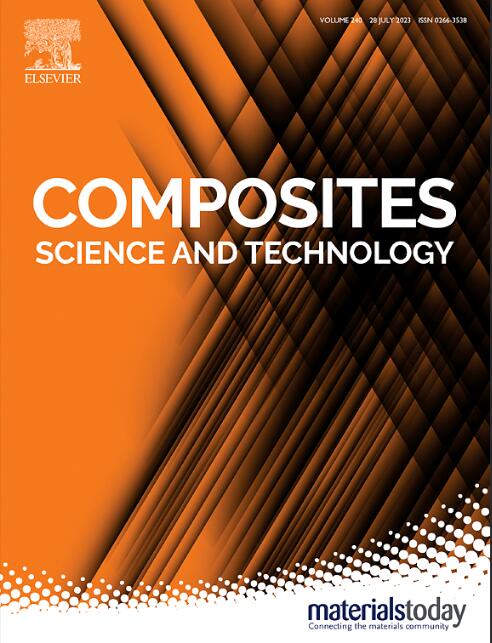In-situ constructing carbon nanotube/carbon fiber-based composite: synergistic effect, multifunctional performances and versatility
IF 9.8
1区 材料科学
Q1 MATERIALS SCIENCE, COMPOSITES
引用次数: 0
Abstract
A green, environmentally friendly, and low-cost method is used to grow carbon nanotubes on the surface of carbon fibers, resulting in CNTs/CF composites. The mechanical properties, thermal conductivity, microwave absorption performance and ablation resistant behaviour of the prepared composites are investigated. Similar with effect of ‘lying on a bed of nails’, CNTs/CF composite exhibits low density (0.55 g/cm3) and can withstand loads up to 2000 times their own weight while maintaining structural integrity. The prepared composite not only exhibits enhanced heat transfer compared with copper, but also demonstrates electromagnetic wave absorption capabilities and ablation resistance. Remarkable improvement in electromagnetic wave absorption has been demonstrated with introduction of reduced graphene oxide (rGO), which confirms the “versatility” of the composting process in such reaction system. Correspondingly, the maximum reflection loss of the composite material can reach −54.6 dB. For ablation resistance, CNTs/CF composite can withstand high temperatures up to about 1200 °C without any changes in macroscopic morphology. These integrated characteristics make CNTs/CF composite a promising lightweight structural material for aerospace, military, and other industries.

原位构建碳纳米管/碳纤维基复合材料:协同效应、多功能性能和通用性
采用一种绿色、环保、低成本的方法在碳纤维表面生长碳纳米管,制备出CNTs/CF复合材料。研究了复合材料的力学性能、导热性能、微波吸收性能和抗烧蚀性能。与“躺在钉床上”的效果类似,CNTs/CF复合材料具有低密度(0.55 g/cm3),可承受高达自身重量2000倍的载荷,同时保持结构完整性。与铜相比,制备的复合材料不仅具有更好的传热性能,而且具有良好的电磁波吸收能力和抗烧蚀能力。随着还原氧化石墨烯(rGO)的引入,电磁波吸收得到了显著改善,这证实了该反应体系中堆肥过程的“多功能性”。相应的,复合材料的最大反射损耗可达- 54.6 dB。在抗烧蚀方面,CNTs/CF复合材料可以承受高达1200℃左右的高温而不改变宏观形貌。这些综合特性使CNTs/CF复合材料成为航空航天、军事和其他行业中很有前途的轻质结构材料。
本文章由计算机程序翻译,如有差异,请以英文原文为准。
求助全文
约1分钟内获得全文
求助全文
来源期刊

Composites Science and Technology
工程技术-材料科学:复合
CiteScore
16.20
自引率
9.90%
发文量
611
审稿时长
33 days
期刊介绍:
Composites Science and Technology publishes refereed original articles on the fundamental and applied science of engineering composites. The focus of this journal is on polymeric matrix composites with reinforcements/fillers ranging from nano- to macro-scale. CSTE encourages manuscripts reporting unique, innovative contributions to the physics, chemistry, materials science and applied mechanics aspects of advanced composites.
Besides traditional fiber reinforced composites, novel composites with significant potential for engineering applications are encouraged.
 求助内容:
求助内容: 应助结果提醒方式:
应助结果提醒方式:


